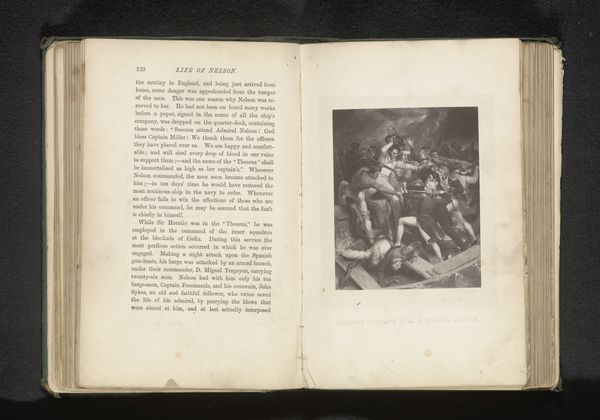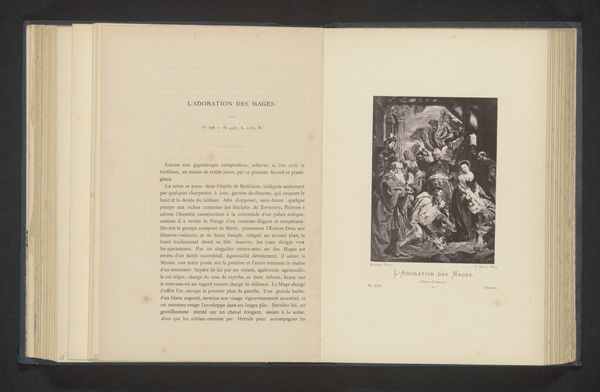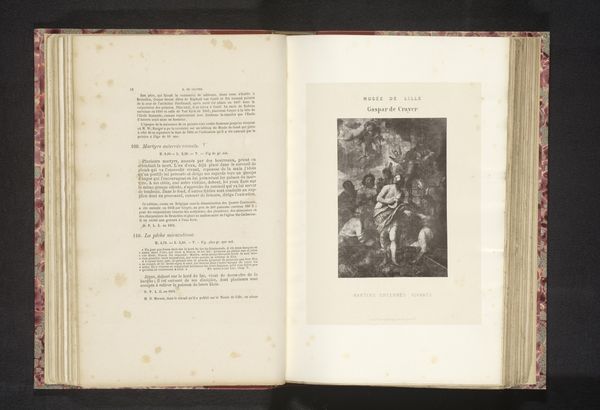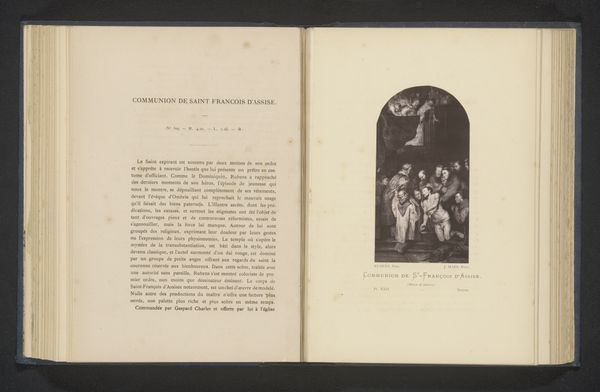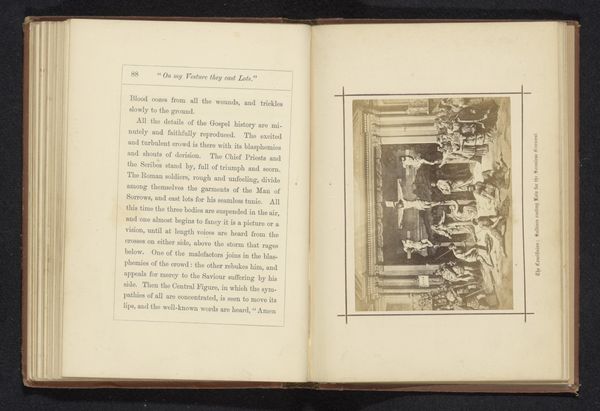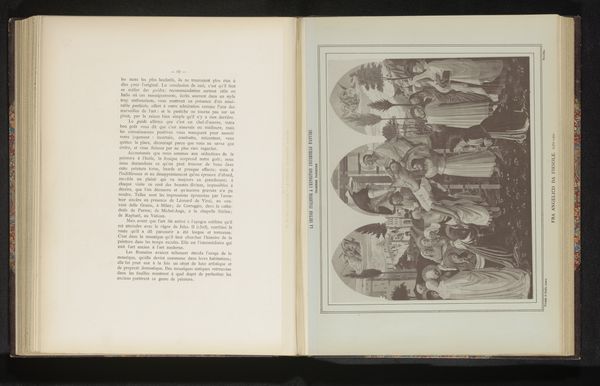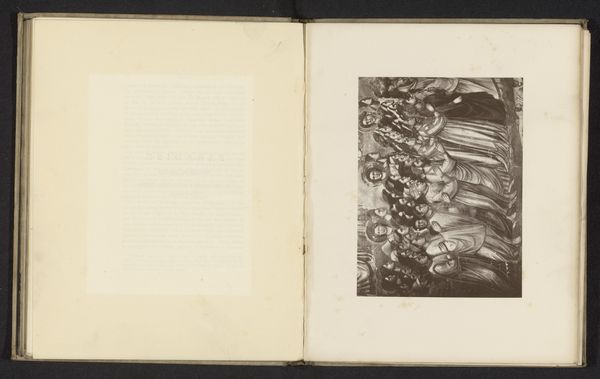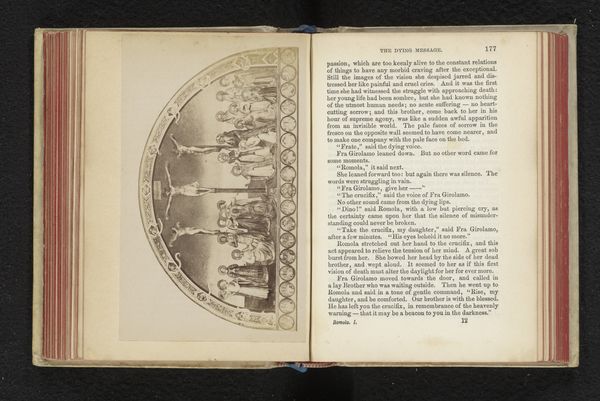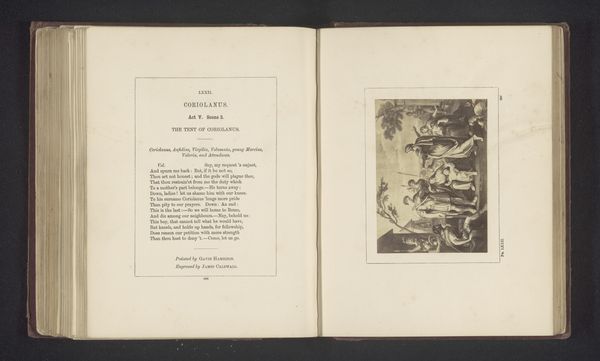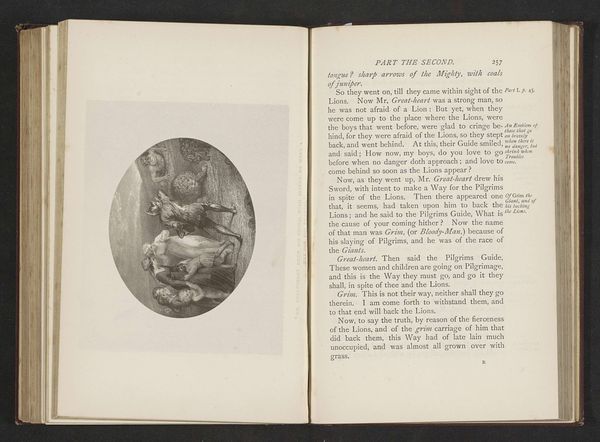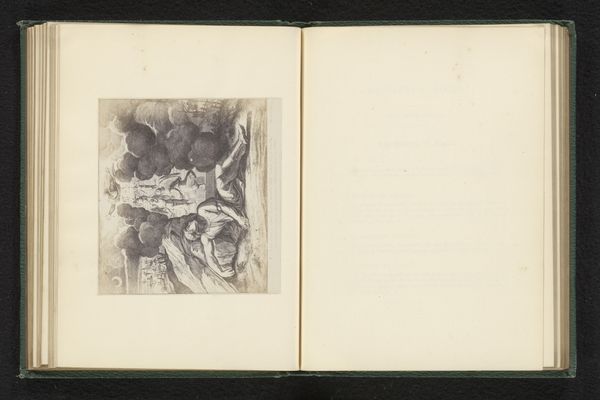
Fotoreproductie van een tekening naar een schilderij door Guercino, voorstellend de begrafenis van Petronella van Rome before 1860
0:00
0:00
anonymous
Rijksmuseum
Dimensions: height 134 mm, width 98 mm
Copyright: Rijks Museum: Open Domain
Curator: It feels like entering a somber stage, a tragic opera perhaps, doesn’t it? All the darkness, the dramatic gestures… Editor: Indeed. What we're observing is a photo reproduction of a drawing based on Guercino's painting, "The Burial of Saint Petronilla," produced sometime before 1860. This print resides within the Rijksmuseum’s collection, offering us a window into art's evolving accessibility through reproduction. Curator: The Saint, ascending to the upper corner of the composition, as though caught mid-flight... And those angels pulling her up... the symbolism of salvation seems very pronounced, perhaps influenced by narratives from the Renaissance era. What's the history here? Editor: Saint Petronilla was believed to be the daughter of Saint Peter, though some accounts debate this relation. The painting depicts her burial, with a heavenly vision above—she ascends to meet Christ and is welcomed. Guercino received the commission for this piece in 1622 by the Barberini family for the Saint Peter Basilica. Curator: Ah, so the choice of Saint Petronilla, as subject, must carry symbolic importance connected to a specific social-political purpose? And the inclusion of classical architectural elements within the scene is an appeal to that power. Editor: Absolutely. Patron saints serve as key figures connecting noble families and communities to religious authority. The composition reinforces that familial patronage, placing them within the scope of divine favor. This engraving after the painting democratized the imagery, making it available outside the sphere of noble society, reshaping the narrative and influence as a form of printed media. Curator: It makes you think about the role of cultural memory. Looking at this print, do you get a sense that the visual language – that tension between death and glorification - connects to shared ideas around sainthood and redemption even today? Editor: Without a doubt. Images of martyrdom and salvation persist across eras, because they continue to fulfill cultural functions that serve various political and spiritual projects. Reproductions like this were also tools. What story would they choose to tell outside its initial placement at St. Peter’s, in the private devotional practices of individuals? The print's materiality becomes as important as its imagery. Curator: Well, whether viewed through faith or history, "The Burial of Saint Petronilla" presents such a vivid crossroads between life, death, art, and power. Editor: An image carrying considerable significance even through reproduction across the ages; history speaking in images.
Comments
No comments
Be the first to comment and join the conversation on the ultimate creative platform.
